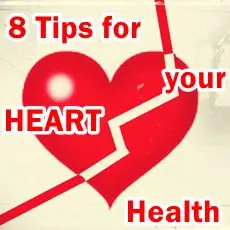Vitamin D - Fact Sheet
The "sunlight vitamin"
Fact Checked
×All the content published in our website is fact checked to validate its accuracy.
Visit our guidelines web page to learn more about our strict processes regarding how we review our content's sources: reliable and reputable journals, media websites, universities, colleges, organizations, and professionals.
Our articles are based on scientific evidence, and the references are included in its footnotes, which are clickable links to sound scientific papers.
First published: 10. Feb.2025
Overview
Vitamin D is essential for maintaining musculoskeletal health. It is found in some animal-based foods, in fortified foods, and is synthesized by the body in the presence of sunlight. This article explains its properties, health benefits, and the potential risks of taking high doses. It also mentions dietary sources and the two types of vitamin D: vitamin D2 and vitamin D3.
References and Further Reading
(1) National Institutes of Health. Office of Dietary Supplements. Vitamin D. Fact Sheet for Health Professionals. Updated: July 26, 2024. Accessed: Feb. 09, 2025
(2) Arzani, M., Jahromi, S.R., Ghorbani, Z. et al., (2020). Gut-brain Axis and migraine headache: a comprehensive review. J Headache Pain 21, 15 (2020). https://doi.org/10.1186/s10194-020-1078-9
(3) Melrose S., (2015). Seasonal Affective Disorder: An Overview of Assessment and Treatment Approaches. Depress Res Treat. 2015;2015:178564. doi:10.1155/2015/178564
(4) Alcorta A, Porta A, Tárrega A, Alvarez MD, Vaquero MP., (2021). Foods for Plant-Based Diets: Challenges and Innovations. Foods. 2021; 10(2):293. https://doi.org/10.3390/foods10020293
(5) Lansdowne AT, Provost SC, (1998). Vitamin D3 enhances mood in healthy subjects during winter. Psychopharmacology (Berl). 1998 Feb;135(4):319-23
(6) Young Sup Woo, et al. (2019). Vitamin D Deficiency/Insufficiency among Inpatients with Depressive Symptoms. Clin Psychopharmacol Neurosci. 2019 Feb; 17(1): 121-124. Published online 2019 Feb 28. doi: 10.9758/cpn.2019.17.1.121
(7) Elizabeth R. Bertone-Johnson, ScD, (2010). Vitamin D and the Occurrence of Depression: Causal Association or Circumstantial Evidence?. Nutr Rev. 2009 Aug; 67(8): 481-492. doi: 10.1111/j.1753-4887.2009.00220.x
(8) Emma O Billington, Lauren A Burt, Marianne S Rose, Erin M Davison, Sharon Gaudet, Michelle Kan, Steven K Boyd, David A Hanley,, (2020). Safety of High-Dose Vitamin D Supplementation: Secondary Analysis of a Randomized Controlled Trial. The Journal of Clinical Endocrinology & Metabolism, Volume 105, Issue 4, April 2020, Pages 1261–1273, https://doi.org/10.1210/clinem/dgz212
(9) Burt LA, Billington EO, Rose MS, Raymond DA, Hanley DA, Boyd SK., (2019). Effect of High-Dose Vitamin D Supplementation on Volumetric Bone Density and Bone Strength: A Randomized Clinical Trial. JAMA. 2019 Aug 27;322(8):736-745. doi: 10.1001/jama.2019.11889. Erratum in: JAMA. 2019 Nov 19;322(19):1925. doi: 10.1001/jama.2019.17910. PMID: 31454046; PMCID: PMC6714464
(10) Zhang Y, Jing D, Zhou G, Xiao Y, Shen M, Chen X and Liu H, (2022. Evidence of a Causal Relationship Between Vitamin D Status and Risk of Psoriasis From the UK Biobank Study. Front. Nutr. 9:807344. doi: 10.3389/fnut.2022.807344
(11) Wilchowski SM, Lareau T., (2022). Psoriasis: Are Your Patients D-pleted? A Brief Literature Review on Vitamin D Deficiency and Its Role in Psoriasis. J Clin Aesthet Dermatol. 2022 Mar;15(3 Suppl 1):S30-S33. PMID: 35382439; PMCID: PMC8970208.
(12) Avenell, A., Mak, J. C. and O'Connell, D., (2014). Vitamin D and vitamin D analogues for preventing fractures in post-menopausal women and older men. Cochrane Database Syst. Rev. 4, CD000227
(13) Bouillon, R., Manousaki, D., Rosen, C. et al., (2022). The health effects of vitamin D supplementation: evidence from human studies. Nat Rev Endocrinol 18, 96–110 (2022). https://doi.org/10.1038/s41574-021-00593-z
(14) Haines ST, Park SK., (2012). Vitamin D supplementation: what's known, what to do, and what's needed. Pharmacotherapy. 2012 Apr;32(4):354-82. doi: 10.1002/phar.1037. PMID: 22461123.
(15) Persson MSM, Stocks J, Walsh DA, Doherty M, Zhang W, (2018). The relative efficacy of topical non-steroidal anti-inflammatory drugs and capsaicin in osteoarthritis: a network meta-analysis of randomised controlled trials. Osteoarthritis Cartilage. 2018 Dec;26(12):1575-1582. doi: 10.1016/j.joca.2018.08.008. Epub 2018 Aug 30. PMID: 30172837
About this Article
Vitamin D - Fact Sheet, A. Whittall
©2025 Fit-and-Well.com. First Published: 10.Feb.2025. Update scheduled for 28.Feb.2028. https://www.fit-and-well.com/fitness/vitamin-d.html
Tags: vitamin D, sunlight, bone health, migraine, osteoarthritis, depression, plant-based diets, psoriasis, autoimmune disorders, cod liver oil, fortified foods



